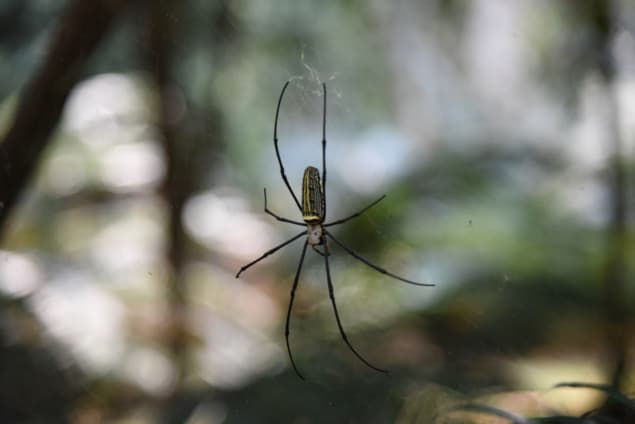
Spider dragline silk exhibits a unique self-powered actuation, controlled simply by tuning relative humidity, according to scientists. A team from China, the UK and USA have shown that high humidity can bring about a huge twist deformation in the silk fibres. This opens up an extensive range of possibilities for its potential use as a rotary actuator. It is also particularly interesting for applications such as artificial muscles.
Spider dragline silk is tougher than nearly all synthetic fibres, also possessing high elasticity, thermal conductivity and interesting torsional behaviour. In addition, it is sensitive to water, exhibiting the phenomenon of supercontraction, where water disrupts the hydrogen bonds crucial for its structure, increasing molecular mobility and allowing structural rearrangement. This leads to a radical shrinking and swelling of the dragline silk. Until now, however, little was known about how water affects its torsional behaviour.
Published in Science Advances, the group led by Dabiao Liu at Huazhong University of Science and Technology and Markus Buehler at MIT have discovered an impressive humidity-induced twist deformation of dragline silk. By taking steps to understand this at the molecular level, they are pinning down the connection between the structural characteristics of the material and its unique humidity-driven torsional behaviour.
Precise control
The group demonstrated that applying stepwise changes in humidity caused the silk to immediately twist above a certain threshold, which varies only slightly with the species of spider. Whereas human hair or Kevlar fibres barely show the slightest traces of twisting, the torsional response of dragline silk is impressive: as soon as humidity reaches about 70%, this can generate a huge twist of up to 300 °/mm in the silk. This is thousands of times greater than actuators based on shape-memory alloys or conducting polymers. The silks showed rotation comparable to or even greater than artificial “muscles” made up of carbon nanotubes and powered by electricity.

Wicked membranes mimic ultrastretchable spider silk
The team show that the dragline silks are also responsive to cyclical changes in humidity by repeatedly changing relative humidity from 40 to 100% and back to 40%. When humidity is below the threshold level the silk remained still, but reaching the threshold immediately triggered the twisting behaviour. From this, the group demonstrated the sensitivity of the response, highlighting the possibility of using humidity as a precise control for twist deformation.
A molecular level twist
To understand the structural changes responsible for this torsional behaviour and the underlying mechanism, the team used molecular simulations of two major proteins found in the silk. They showed that the torsional behaviour can be attributed to the prevalence of one specific amino acid, proline, in one of these proteins. This amino acid can force the molecule into a twisted pattern, as well as giving rise to the torsional properties by disrupting hydrogen bonding in the molecule. The group suggest that humidity can induce this proline twisting, which then turns the dragline silk, acting as a torsional actuator.
By generating such a huge deformation without any mechanical input, this self-powered actuation driven by humidity can lead to exciting applications such as hydroscopic artificial muscles. It even opens up the possibility of humidity-driven soft robots or smart textiles.



